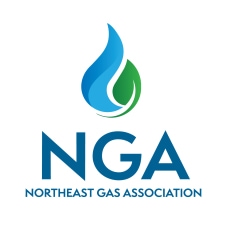Gas Supply Trends
SUMMARY
- U.S. natural gas resource base is extensive and varied
- Shale gas represents 63% of U.S. proved natural gas reserves
- Appalachian production has transformed Northeast market dynamics
- LNG imports provide market flexibility and critical winter supply in the Northeast
- U.S. LNG exports continue to grow, in response to market drivers and geopolitical changes
With its extensive natural gas resource base and new technology innovations, the United States has become the largest producer of natural gas in the world.
U.S. Gas Resource Base Remains Extensive
A key reason for this strong production trend of recent years is the growing role of shale and unconventional gas production. Shale gas now accounts for 63% of total U.S. natural gas proved
reserves (source: U.S. EIA, 12-2022).
In February 2022, the U.S. EIA reported that the Appalachian region "has provided the largest share of U.S. domestic natural gas output, accounting for one-third of Lower-48 production since
2016." In EIA's "Annual Energy Outlook 2022," it projects that "U.S. natural gas production will continue to increase through 2050...Much of this growth comes from the Appalachia Basin (East
region) and the Mississippi-Louisiana salt basins (Gulf Coast region)."
A comprehensive review of the U.S. supply resource base can be found in the Potential Gas Committee's 2020 biennial report: Potential Supply of Natural Gas in the United States, released in
fall 2021. The updated assessment finds that the United States possesses a total technically recoverable natural gas resource base of 3,368 trillion cubic feet (Tcf). As can be seen in the
chart image below, the U.S. domestic resource base has grown exponentially in the last 14 years due to the advancement of shale gas development.
The PGC noted that shale gas accounts for 63% of the country's total potential resource, at 2,130 Tcf. Furthermore, "the Atlantic area ranks as the country's richest resource area with 39% of
total U.S. gas resources," led by the Marcellus and Utica shale plays in the Appalachian basin.
Pivotal Role of Shale and Other "Unconventional" Resources
Shale gas is considered an "unconventional" resource. The gas is located generally deep underground within shale rock formations. Advances in drilling technology, such as horizontal drilling,
have enabled natural gas producers to begin tapping this supply source in a significant way.
As noted above, the largest producing shale area in the U.S. is the Appalachian Basin and its Marcellus Shale and Utica Shale basins. These shale gas formations extend from West Virginia into
Ohio, Pennsylvania and New York. Shale production is occurring in OH, PA and WV; unconventional drilling is not permitted in NY.
Production in the Appalachian region has grown steadily in the last decade, to 35 billion cubic feet per day as of late 2022.
A challenge remains the ability to add new pipeline infrastructure to "take away" new supply into the Northeast and other regions. Siting is a significant challenge for natural gas projects
as it is for all other energy sources. In April 2022, U.S. EIA noted: "Production growth in Appalachia over the past 10 years has been aided by improved productivity from wells drilled,
pipeline buildouts, and increased takeaway capacity. However, regional transportation capacity limits have now been reached."
See NGA's separate Issue Brief on the Marcellus Shale for more information on this resource base.
Canadian Gas: Longstanding Part of U.S. Supply Mix,
amid Changing Bilateral Trade Patterns
Regarding imports, Canada has been a valuable supplier of gas to the U.S. and the Northeast for decades. Canada will remain an important supplier for years to come but its share of the U.S. market is expected to decline over the long-term. Nevertheless, Canada, like the U.S., retains a large natural gas resource base.
In a paper posted in March 2023, the Canada Energy Regulator (CER) noted: "As of 2022, gas production is again hitting record highs in both countries [Canada & U.S.]. Gas production is now relatively low-cost and the gas resource so large that production could continue to grow well into the future under some scenarios."
Canadian exports to the U.S. West and Midwest are generally steady, but exports to the Eastern U.S. have declined over the last decade, reflecting the rise of U.S. Appalachian production. From 2008 to 2022, Canadian natural gas exports to the Eastern U.S. decreased from 2.7 Bcf/d to 1 Bcf/d, almost a two-thirds decline (source: CER). In June 2021, the Canada Energy Regulator (CER) noted: "The rise in shale gas production in the U.S. Northeast region has displaced some of the gas traditionally supplied by western Canadian producers. Imports from the U.S. have increased 33% between 2015 and 2019, coming almost entirely from the U.S. East region... The TC Canadian Mainline's Niagara point has imported natural gas since 2012, and its Chippawa point has imported natural gas since 2015. Both points were former export points that were reversed so natural gas could flow into Ontario from the Marcellus and Utica shales of the Appalachian Basin. In 2017, TCPL also changed the Iroquois, Ontario point so gas could flow bi-directionally. While Iroquois continues to primarily export gas, it has periodically imported gas from 2018 onward."
The CER also notes that the end of the Sable Island production field offshore Nova Scotia in late 2018 has led to the Maritimes Provinces primarily importing via the pipeline system in New England. The CER noted in June 2021: "The Maritimes was once supplied by natural gas produced in offshore Nova Scotia, with some volumes of gas imported during peak times from the U.S. and globally from the Canaport LNG terminal in New Brunswick. Nova Scotia's offshore natural gas production declined since 2014 and was finally shut down in mid-2018. Since 2015, natural gas has been increasingly imported through St. Stephen, New Brunswick, from the U.S. on the bi-directional M&NP Pipeline. Today, St. Stephen primarily imports natural gas, after mostly exporting until 2015."
In November 2022, the U.S. EIA released an update on the role of natural gas energy trade between the U.S. and Canada. EIA noted: "Despite the overall reduction in net imports of natural gas from Canada, trade remains important, particularly at the regional level... Imports from Canada also play an important role in the Eastern region of the United States. In particular, while capacity to supply the Northeast with U.S. natural gas has expanded and the Eastern region is now a net exporter of natural gas to Canada for much of the year, imports from Canada help support annual seasonal fluctuations in consumption, particularly during the annual winter peak, when cold temperatures drive demand for heating. As a result, since 2012, imports into the Eastern region have generally peaked in January or February at approximately 2 Bcf/d and then again in July or August at approximately 1 Bcf/d when high temperatures drive demand for air-conditioning."
The bi-directional Canada-U.S. trade will remain valuable, as a reliable energy relationship for both sides of the border.
LNG Remains Valuable to Key Markets - Such as
New England & the Northeast
The global market is also increasing its output of natural gas through the expansion of LNG trade. Liquefied natural gas (LNG) export capability has grown strongly in recent years with
expanded liquefaction capacity in countries as diverse as Australia and Qatar. The U.S. government has approved several LNG export facilities to date - located in the Gulf Coast and Maryland.
The U.S. is now one of the largest exporters of LNG in the world. U.S. LNG exports have grown from 1 Tcf in 2018 to 3.6 Tcf in 2021.
U.S. LNG exports are on track to grow further during this current decade in response to shifting global energy market dynamics. In March 2022, the U.S. government and the European Union
announced an agreement to help Europe reduce its dependence on Russian energy in the wake of Russia's invasion of Ukraine. Among the actions, the U.S. said it "will work with international
partners and strive to ensure additional LNG volumes for the EU market of at least 15 bcm in 2022, with expected increases going forward."
Meanwhile, U.S. demand for imported LNG has been declining at the same time, reflecting the strong growth in domestic U.S. production. Nevertheless, LNG continues to be critical to the
Northeast - and New England - natural gas supply mix. With the Northeast delivery system still constrained at certain points, LNG helps to ease bottlenecks and increase supply and delivery
options, and is particularly valuable in the high-demand winter months. LNG remains an essential part of the Northeast natural gas supply portfolio.
Overall, the supply outlook for natural gas in the U.S. remains strong, with more supply opportunities than foreseen just a few years ago. It requires prudent and responsible development, and
infrastructure investments to link these new supplies to end-use markets.



